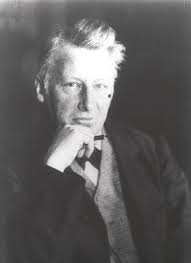Today's KNOWLEDGE Share:
Jacobus Henricus van 't Hoff-Nobel Prize 1901
Stereochemistry
Methane was known to consist of four atoms of hydrogen and one of carbon. It had also been determined that it was a symmetrical compound, meaning that in chemical reactions, other chemicals did not discriminate as to which hydrogen atom they would react to. Van 't Hoff quickly concluded that the only spatial arrangement consistent with this finding was one where the carbon atom lay at the center of a regular tetrahedron (a four-sided figure with equilateral triangles as sides) with each of the other four molecules at a corner of the tetrahedron. This was the first peek that scientists had ventured to take into the three-dimensional structure of molecules.
Van 't Hoff claimed as the inspiration for his discovery, Johannes Wislicenus's studies on lactic acid, in which he declares that differences in some chemical properties may be attributable to structural differences in their molecules. On the other hand, Joseph Achille Le Bel, who, incidentally, had studied with van 't Hoff under Kekule, and who published a similar conclusion to van 't Hoff, claimed Louis Pasteur as his inspiration.
Optically active compounds
One property chemists had trouble explaining was the optical activity of different substances in solution. A beam of light is said to be polarized when, according to the wave theory of light, all the waves are in the same plane. Jean-Baptiste Biot had established in the early nineteenth century that when a beam of polarized light passes through the solutions of some organic compounds, the plane of polarization of the light is rotated, sometimes to the right, sometimes to the left. He postulated that this could be due to the lack of symmetry in the structure of the molecules, meaning that the molecules must have a left-hand and right-hand side that are distinguishable from one another. Louis Pasteur surveyed a large number of substances that exhibit this property, and found that they all consisted of a carbon atom surrounded by atoms of more than one element. Van 't Hoff showed how his stereochemical model of carbon compounds could account for this property.
Van 't Hoff was the first chemist to peer into the three-dimensional structure of molecules. The techniques that led to the discovery of the three-dimensional structure of proteins and to deciphering the winding staircase-like structure of the DNA molecule can be traced to his work more than half a century earlier.
Van 't Hoff's exploration of the factors that drive the speed of chemical reactions were of major importance to the chemical industry, and to the establishment of the field of physical chemistry.
Upon studying the lives of famous scientists, van 't Hoff concluded that imagination plays an all-important role in the ability of a researcher to make new discoveries.
Source:newworldencyclopedia
Visit MY BLOG http://polymerguru.blogspot.com
#chemistry #3dstructure #discovery #nobelprize





No comments:
Post a Comment